National Symbols of India
*** इस पृष्ठ को हिंदी में पढ़े ***
Table of Contents
Significance of National Symbols
National symbols hold immense significance as they represent the identity, values, and aspirations of a nation and its people. The emblem, song, flag, animal, bird, and other symbols embody the collective spirit and heritage of a country, fostering a sense of unity and patriotism among its citizens. The national flag, with its colors and design, serves as a visual representation of the nation's history and ideals, evoking a strong sense of pride and belonging. The national anthem or song captures the essence of a nation's struggles, triumphs, and shared values, becoming a unifying force during national events and celebrations. National animals and birds often embody traits that resonate with the country's character or cultural significance, becoming symbols of strength, freedom, or cultural heritage. These symbols act as rallying points, fostering a shared sense of identity and belonging, reinforcing the values and principles that a nation upholds, and serving as reminders of its rich history and collective achievements.
National Emblem
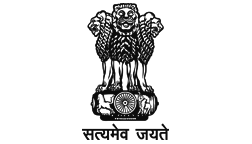
- The National Emblem is an adaptation from the Sarnath Lion Capital of Ashoka.
- The four smaller animals at the bottom of national emblem are horse and bull (visible) and lion and elephant (not visible).
- The National Emblem was adopted by the Government of India on 26 January 1950.
- 'Satyameva Jayate' inscribed below has been taken from the Mundaka Upanishad.
National Anthem
- The national anthem 'Jana Gana Mana' was first sung at Calcutta session of Indian National Congress in 1911, 27 Dec.
- It was adopted by the Indian constitution on 24 Jan 1950.
- Its English rendering has been given by Tagore himself.
- The song was composed originally in Bengali by Rabindranath Tagore, the National Anthem is its Hindi version.
- The complete song consists of five stanzas. The first stanza contains the full version of the National Anthem.
- The playing time for full version of the song is 52 seconds.
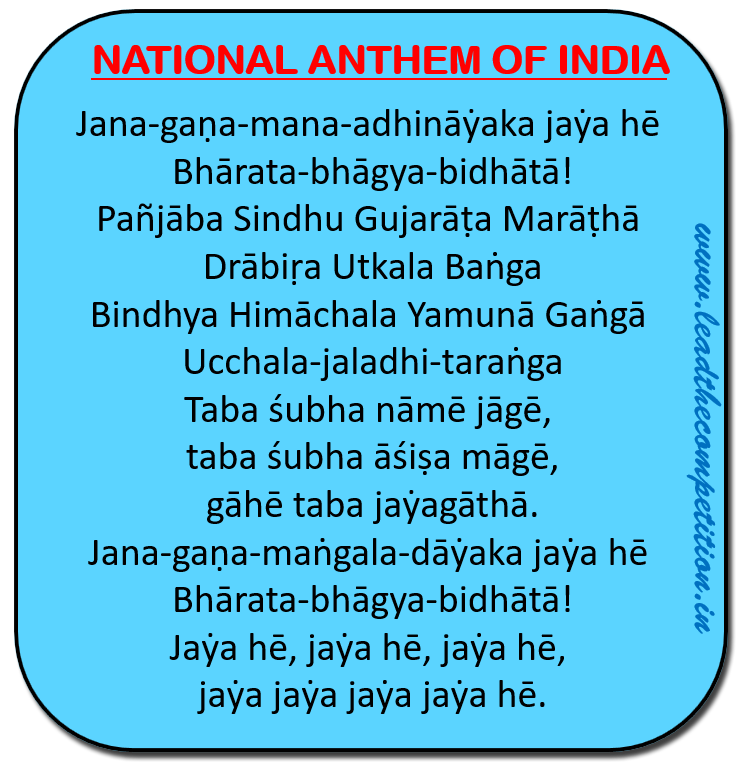
National Song
- The national song Vande Mataram has been taken from Bankim Chandra Chatterji’s Anand Math.
- The first two verses form the National Song of India.
- It was first sung at 1896 session of INC.
Its English rendering has been given by Shri Aurobindo. - It was adopted by the Indian National Congress as the National Song of India in 1937.
- The song was adopted by the Constituent Assembly on 24 January 1950 to be honoured equally with Jana Gana Mana and have equal status with it.
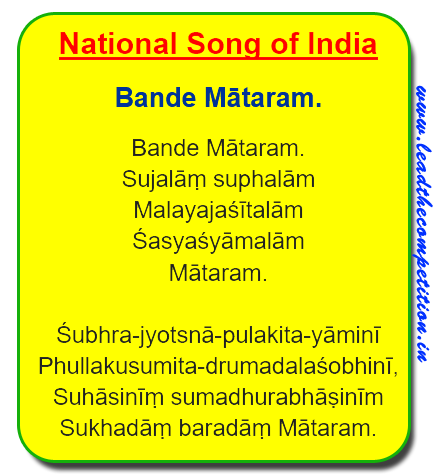
National Calendar
- The national calendar based on the Saka Era was adopted on 22 Mar 1957.
- Chaitra is the first month of the year whose 1st day falls on 22 March normally and on 21 March in a leap year.
- The national calendar also has 365/366 days
- Chaitra has 30 days normally and 31 days in a leap year.
- The Saka year corresponding to the Gregorian year 2024 is 1945-46. (1945 upto March 2024 and 1946 thereafter)

National Flag

- The design of the national flag was adopted on 22 July 1947.
- The ratio of width of the flag to its length is two to three.
- The design of the wheel at the centre is taken from the abacus of the Sarnath Lion Capital of Ashoka.
- The 'Dharmachakra' (wheel) at the centre has 24 spokes.
- The display of the National Flag is governed by Flag Code of India, 2002, which took effect on 26 Jan 2002.
- As per the provisions of the Flag Code of India, 2002, there shall be no restriction on the display of the National Flag by members of general public, private organisations, educational institutions, etc.,except to the extent provided in the Emblems and Names (Prevention of Improper Use) Act, 1950 and the Prevention of Insults to National Honour Act, 1971 and any other law enacted on the subject.
Other National Symbols
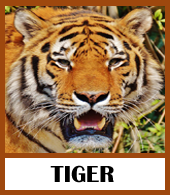 |
The national animal is Tiger (Panthera tigris) |
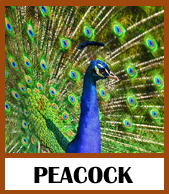 |
The national bird is Peacock (Pavo cristatus) |
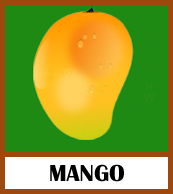 |
The national fruit is Mango (Magnifera indica) |
 |
The national flower is Lotus (Nelumbo nucifera) |
 |
The national tree is Banyan (Ficus benghalensis) |
 |
The national aquatic animal is River Dolphin (Platanista gangetica) |
 |
The national river animal is the Ganges or the Ganga which originates at Gangotri in Uttarakhand |
Comparison - National Anthem and National Song
| National Anthem | National Song | |
|---|---|---|
| Name | Jana Gana Mana | Vande Mataram |
| Author | Rabindranath Tagore | Bankim Chandra Chatterji |
| Originally written in | Bengali | Sanskrit |
| 1st sung in | 1911, Kolkata | 1896, Kolkata |
| English rendering by | Tagore | Shri Aurobindo |
www.leadthecompetition.in
Quiz on National Symbols of India
| 1. How many spokes does the Dharmachakra in the Indian tricolour have? | ||
| Ans | ||
| 2. From which ancient Indian text has the phrase Satyameva Jayate been? | ||
| Ans | ||
| 3. Which of the following is the National River of India? | ||
| Ans | ||
| 4. In which year was the National Anthem was first sung in a session of Indian National Congress? | ||
| Ans | ||
| 5. From which of the following books has the national song, Vande Mataram been taken? | ||
| Ans | ||
| 6. Which of the following is the National Tree of India? | ||
| Ans | ||
| 7. What is the ratio of the length and breadth of the Indian National Flag? | ||
| Ans | ||
| 8. What is the playing time of the National Anthem? | ||
| Ans | ||
| 9. Which is the first month of the National Calendar? | ||
| Ans | ||
| 10. Which are animals normally visible at the bottom of the National Emblem? | ||
| Ans | ||
| 11. Which of the following is the scientific name of the National Animal of India? | ||
| Ans | ||
| 12. In which language is the National Song of India written? | ||
| Ans | ||